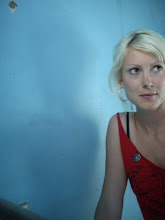Annie Leibovitz
ANNIE LEIBOVITZ A Photographers Life 1990 - 2005
After reading the book and viewing her photographs i had this immediate curiosity to find out more. The book contains both her personal and professional photographs, as she explains how she does not have two lives, they are all a part of each other. The book not only contains her well known photographs, but also personal self portrait (some of her nude), her lover Susan Sontag, her three daughters, family and friends. The photographs are predominately black and white but include colour with her later photographs. Annie Leibovitz explains how the book came from a place of grief, after the loss of her father and her long time partner, Susan Sontag.
At the age of 21 she worked for Rolling Stone magazine and two years later became the chief photographer. A year later Rolling Stone started printing in colour, which was new to Leibovitz. So she had to teach herself the techniques with light and colour. Her first assignment was with John Lennon and after 10 year with Rolling Stone she photographed such artists as Patti Smith, Bob Dylan, Bob Marley and toured with the Rolling Stones 1975 world tour as their official photographer. She also photographed John Lennon a few hours before he was shot dead outside his apartment in 1980.
John Lennon 1971 Rolling Stone Tour 1975 John Lennon & Yoko Ono 1981
She worked with Vanity Fair producing famous and controversial/provoative works such as Whoopi Goldberg in a bath of milk and Demi Moore naked and seven months pregnant.
She received awards from the French Government and designated a living legend.
Her first museum show in 1991 was at the National Portrait Gallery in Washington which toured internationally for six years. At this time she was the only living and only female portraitist to be featured in an exhibition by this institution.
In the summer of 1993 she had the opportunity to go to Sarajevo as the city had been under siege for over a year. She explains how there wasnt time to worry about what type of picture you were taking as life in the city was extremely dangerous. She shot the Bloody Bicycle in black and white, as if to almost suspend for a moment our preconceptions about war. The unseen rider is a powerful component of the photograph showing life's unpredictability.
Leibovitz admired Richard Avedon's portrait work and his great communication skills - something she had difficulty with, especially with her children. Avedon was able to engage the subjects to the point where they became occupied and forgot they were being photographed. Leibovitz recognises her need to interact more but stated "i just like looking at them." Other influences include Alfred Stieglitz of Georgia O'Keefe and the honest artistry of Diane Arbus.

Leibovitz encountered some controversy throughout her career. Entertainment tonight reported in 2008 that a 15 year old Miley Cyrus was photographed topless for a photo shoot with Vanity Fair. Hundreds of angry parents showed their disgust through endless emails and letters. New York Times published an article on their website clarifying the although the pictures left the impression that Cyrus was naked and bare-chested, she was wrapped in a bed sheet and actually not topless. Both Leibovitz ands Cyrus apologised for this misinterpretation.
Leibovitz came into financial troubles in 2009, where she borrowed US$15.5 million dollars and put up as collateral her few homes and the rights to all her photographs. Five months later there was a breach in the contract and a lawsuit filed against her, which makes you question how an artist of her great status could be in financial straits, despite a US $50 million archive.
Annie Leibovitz was an inspiring and controversial photographer of the 20th Century. She utilised a traditional method of taking photographs in black and white. She later embraced colour and her trademark was to use vivid primary colours supporting startling poses of her subjects. Some critics say that the poses appear too staged, calculated and controlled. Which may be due to her approach to first get to know her subjects and researching them before visualising a portrait. She had to relearn the techniques for lighting in 1974 and her favoured source of light is a large diffused flash. She preferred 35-mm lenses as she thought that coming in too tight with the subject was boring. Her later work for example 'Little Boy and Girl Lost" she utilised digital photography and image manipulation technologies. She believes these can be used and misused. She later worked for Lois Vuitton, advertising bags where I believe the surreal nature (which was the intention) of the photographs have been over worked and taken the life out of the photographs.
I really loved her earlier black and white photographs, especially the ones of her family and friends. They are not always in focus but portray so much life and emotion in them.
Louis Vuitton 2008 Little Boy & Girl Lost 2009











